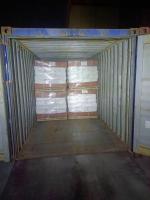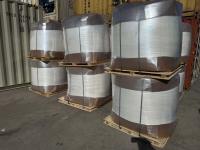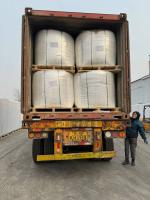Our Products
Polyacrylamide / Cationic polyacrylamide Superfloc 8396 can be replaced by Chinafloc C

Cationic polyacrylamide (CPAM) is a versatile water-soluble polymer widely used in solid–liquid separation processes, wastewater treatment, sludge conditioning, and industrial applications where flocculation and clarification are essential. One notable commercial product in this category is Superfloc 8396, manufactured under the Superfloc brand, which has long been recognized for providing reliable polymer solutions tailored to the needs of municipal and industrial users. Superfloc 8396 is formulated as a cationic polyacrylamide with optimized molecular weight and charge density, making it effective for binding and aggregating negatively charged suspended solids, colloidal particles, and organic matter in aqueous systems. Its wide applicability stems from its ability to improve process efficiency, reduce sludge volumes, enhance water quality, and lower treatment costs. The following discussion examines in depth the main applications of Superfloc 8396 across multiple industries.
One of the most significant applications of Superfloc 8396 is in municipal wastewater treatment. Municipal wastewater contains a mixture of organic matter, biological solids, food residues, fats, oils, greases, and colloidal materials that resist natural sedimentation. These particles typically carry a negative surface charge, which stabilizes them in suspension. When Superfloc 8396 is introduced, its positively charged polymer chains neutralize the negative charges and form bridges between particles. This process results in the creation of larger, denser flocs that settle quickly in clarifiers. The outcome is improved turbidity reduction, better removal of suspended solids, and higher-quality effluent water that complies with discharge regulations. Municipal treatment plants also rely on this product in secondary and tertiary treatment stages, where it acts as a coagulant aid alongside metal salts such as alum or ferric chloride, ensuring faster sedimentation and improved filter performance.
In addition to clarification, Superfloc 8396 is heavily employed in sludge thickening and dewatering operations. Sludge generated from municipal treatment is rich in water, often exceeding 95%, which makes handling and disposal expensive. By conditioning the sludge with Superfloc 8396 before mechanical dewatering equipment such as centrifuges, belt filter presses, or chamber filter presses, operators achieve more efficient water release. The polymer enhances floc formation, reduces capillary-bound water, and produces a drier cake with higher solids content. This reduction in sludge volume leads to lower transportation and disposal costs, minimizes landfill burden, and improves the overall economics of wastewater management. Moreover, improved dewatering efficiency translates into reduced energy consumption, which supports sustainability objectives.
Superfloc 8396 also finds widespread application in industrial wastewater treatment, where the diversity of effluents demands adaptable solutions. In the food and beverage industry, for instance, wastewater streams may contain high levels of fats, proteins, sugars, and organic matter. Superfloc 8396 assists in clarifying these effluents, enhancing biological treatment efficiency, and improving compliance with environmental discharge standards. In the textile and dye industry, effluents often contain charged dye molecules and suspended fibers that resist settling. The cationic nature of Superfloc 8396 allows it to bind with negatively charged dye particles, enabling effective removal and ensuring that effluents are clearer and less colored. Similarly, in the pulp and paper industry, this polymer improves fiber recovery, assists in white water clarification, and contributes to cleaner effluent, reducing the environmental footprint of paper production.
Another notable industrial application is in the oil and gas sector, where water treatment plays a critical role in production and refining. Produced water, which is a byproduct of oil extraction, contains dispersed hydrocarbons, suspended solids, and salts. By using Superfloc 8396, operators can separate oil-in-water emulsions more effectively, enhance water recycling, and reduce contamination. During refining, it also assists in treating effluents containing organics and particulates, ensuring that discharge water meets regulatory requirements. The polymer’s adaptability to high loads of contaminants and varying pH conditions makes it suitable for such challenging environments.
In the realm of drinking water treatment, Superfloc 8396 may serve as a coagulant aid. Although inorganic salts like aluminum sulfate are primary coagulants, adding cationic polyacrylamide as a flocculant booster accelerates particle aggregation, reduces chemical consumption, and improves sedimentation. This application is especially beneficial when treating surface waters with high turbidity, color, or natural organic matter. However, only certified grades of the product suitable for potable water use are applied, ensuring that treated water remains safe for human consumption.
The mining and mineral processing sector also benefits from the application of Superfloc 8396. Tailings slurries produced during ore beneficiation contain fine particles that are difficult to settle due to their negative charges and small size. By applying Superfloc 8396, mining operators achieve faster thickening, clearer overflow water, and improved recovery of process water. This not only reduces the footprint of tailings storage facilities but also contributes to environmental protection and water conservation. Additionally, in coal washing plants, it promotes rapid sedimentation of fine coal particles, leading to improved product recovery and reduced water losses.
Another field of application is in biogas and anaerobic digestion plants, where sludge dewatering is a critical step. Digestate produced from biogas operations requires thickening and dewatering before disposal or land application. Superfloc 8396 enhances this process by reducing water retention in the sludge, yielding a more manageable digestate with higher dry solids. This contributes to lower disposal costs and makes energy recovery operations more sustainable.
The environmental benefits of using Superfloc 8396 extend beyond treatment efficiency. By enhancing flocculation and dewatering, it enables higher rates of water recycling and reuse, reducing freshwater consumption. This is particularly important in water-scarce regions and industries that face strict sustainability targets. Moreover, the reduction in chemical consumption and energy requirements associated with improved treatment processes contributes to a smaller carbon footprint and greater overall resource efficiency.
In summary, Superfloc 8396 is a high-performance cationic polyacrylamide with extensive applications across municipal wastewater treatment, sludge dewatering, industrial effluent clarification, potable water treatment, oil and gas operations, mineral processing, and biogas systems. Its primary strength lies in its ability to destabilize and aggregate negatively charged particles, forming large flocs that settle quickly and release water effectively. The benefits include improved water quality, reduced sludge volumes, lower operating costs, and enhanced environmental compliance. As industries and municipalities face increasing pressures to manage water resources sustainably, products like Superfloc 8396 serve as indispensable tools for efficient water treatment and sludge management. Its adaptability to different effluents, compatibility with existing equipment, and ability to deliver consistent results underscore its importance in modern water management practices.





